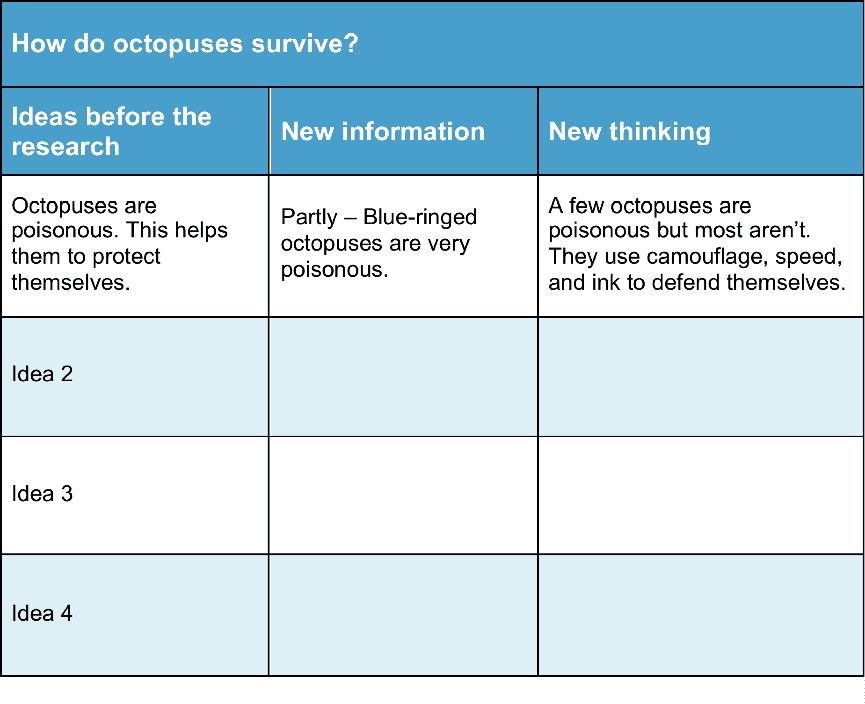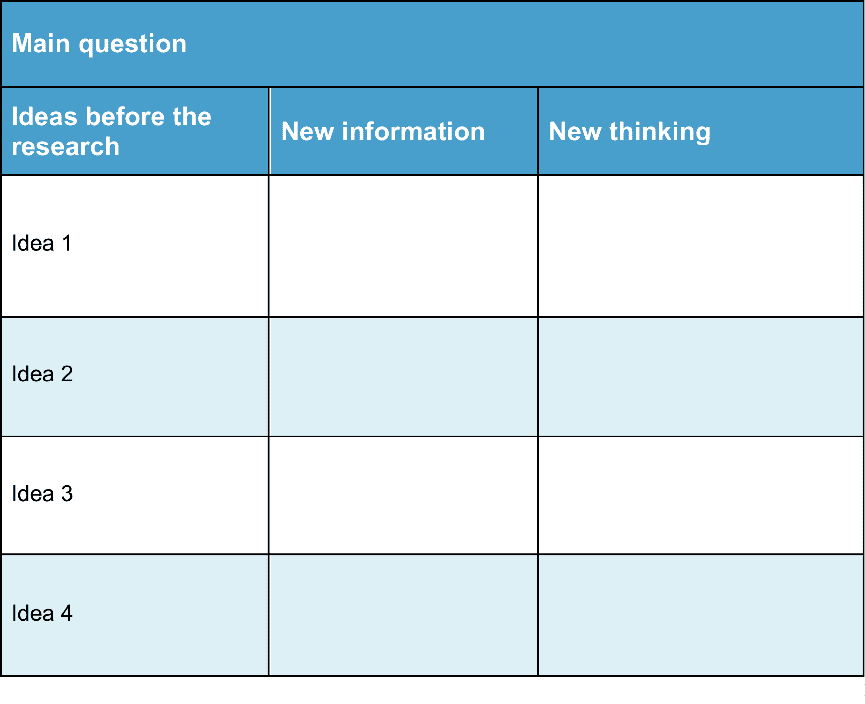Information for Teachers
Curriculum links
This investigation is linked to the following Grade 4 Next Generation Science Standards.
PS4.A: Wave Properties
Waves, which are regular patterns of motion, can be made in water by disturbing the surface. When waves move across the surface of deep water, the water goes up and down in place; there is no net motion in the direction of the wave except when the water meets a beach. (4-PS4-1)
Waves of the same type can differ in amplitude (height of the wave) and wavelength (spacing between wave peaks). (4-PS4-1)
LS1.A: Structure and Function
Plants and animals have both internal and external structures that serve various functions in growth, survival, behavior, and reproduction. (4-LS1-1)
LS1.D: Information Processing
Different sense receptors are specialized for particular kinds of information, which may be then processed by the animal’s brain. Animals are able to use their perceptions and memories to guide their actions. (4-LS1-2)
ESS1.C: The History of Planet Earth
Local, regional, and global patterns of rock formations reveal changes over time due to earth forces, such as earthquakes. The presence and location of certain fossil types indicate the order in which rock layers were formed. (4-ESS1-1)
ESS2.B: Plate Tectonics and Large-Scale System Interactions
The locations of mountain ranges, deep ocean trenches, ocean floor structures, earthquakes, and volcanoes occur in patterns. Most earthquakes and volcanoes occur in bands that are often along the boundaries between continents and oceans. Major mountain chains form inside continents or near their edges. Maps can help locate the different land and water features areas of Earth. (4-ESS2-2)
ESS2.E: Biogeology
Living things affect the physical characteristics of their regions. (4-ESS2-1)
Helpful websites
You may want to direct your students to a website to help with their investigations.
Some helpful places for students to research include:
David Attenborough’s BBC nature series “The Blue Planet” and “The Blue Planet 2” videos or books. This series provides an exceptional opportunity to see right to the bottom of the ocean as well as giving a lot of interesting facts about life in the ocean. Search for “Blue Planet” videos.
Students can visit the kids National Geographic website:
https://www.natgeokids.com/au/discover/geography/general-geography/ocean-facts/
They can learn some ocean facts and see a camouflaged octopus appear from seemingly nowhere. Search further in this site to find out about a range of interesting marine animals, and even some weird ones.
Students search for a particular animal using its name. They can add focus by using one or more of these terms: food, breeding, defense, habitat, behaviors, threats. For example, octopus+defense.
How to search the internet
1 Keep your request short
Fewer words will give a more accurate search.
2 Choose exactly what you want
For example: Arctic Circle Climate
3 Use quotes
Double quotes around a set of words tell the search engine to consider those exact words in that exact order without any change. For example: “Arctic Circle Climate”
4 Use the plus sign (+)
If you add a plus sign (+) between words, the internet will search for all the words. For example: migrate+birds+whales+mammal
5 Use the minus sign (–) to say what you don’t want
Use a minus sign (–) to show words you do not want to appear in your results. For example: if you search for burrowing animals and do not want mammals in your search, –mammals will exclude mammals. Note that you need to put a space before the minus sign for the word to be excluded.
6 Be very clear about what you don’t want
Part 1
Ask questions and define problems
After reading Awesome Oceans, you may have questions about different parts of the ocean, how animals are able to live there, and how people explore and use the ocean.
List your questions
- Compare your list with questions that others have.
- Choose a question you would like to investigate.
- You can work alone, with a partner, or in a small group.
You may want to choose one or more of these questions to investigate
Q1. How are different zones of the ocean the same? How are they different?
Q2. Where in the ocean do people go? Why do they go there?
Q3. Why do we need to protect the world’s oceans? How can this be done?
Q4. Choose an animal you are interested in, for example, sea dragon, whale shark, octopus. What are its habits, behaviors, and needs? Where does it live? What, if anything, threatens the survival of this animal?
Go to Part 2 Investigate →Part 2
Investigate
Helpful websites
You may want to use websites to help you’re your investigations.
Some helpful places to research include:
David Attenborough’s BBC nature series “The Blue Planet” and “The Blue Planet 2” videos or books. This series provides an exceptional opportunity to see right to the bottom of the ocean as well as giving a lot of interesting facts about life in the ocean. Search for “Blue Planet” videos.
You can visit the kids National Geographic website where you can learn some ocean facts and see a camouflaged octopus appear from seemingly nowhere. Search further in this site to find out about a range of interesting marine animals, and even some weird ones.
You can search for a particular animal using its name. You can add focus by using one or more of these terms: food, breeding, defense, habitat, behaviors, threats. For example, octopus+defense.
Go to Part 3 Record data →Part 3
Record data
Find a way of recording your information that will allow you to see any patterns in the data.
Make a data chart to record the information that you find.
How have your ideas changed?
What new information have you learned?
Data Chart for How do octopuses survive?
 Download Chart
Download Chart
Go to Part 4 Organize, analyze, and interpret data →
Part 4
Organize, analyze, and interpret data
1. Look over the information you have gathered and the patterns you have found.
Have your ideas changed?
What new information have you learned?
2. Search for other patterns.
3. Makes notes about what you find.
Go to Part 5 Present and share →Part 5
Present and share
Look over all of the information that you have gathered in your investigation.
What are the most important ideas about your topic?
Make a chart showing the most important ideas.
 Download Chart
Download Chart
← Return to menu